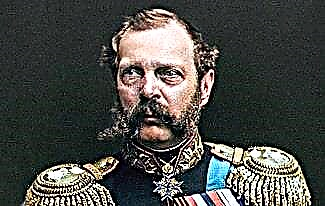Adam Smith - Scottish economist and ethical philosopher, one of the founders of economic theory as a science, the founder of its traditional school.
The biography of Adam Smith is full of various discoveries and interesting facts from his personal life.
We bring to your attention a short biography of Adam Smith.

Biography of Adam Smith
Adam Smith was allegedly born on June 5 (16), 1723 in the Scottish capital, Edinburgh. He grew up and was raised in an educated family.
His father, Adam Smith, passed away a few weeks after the birth of his son. He worked as a lawyer and customs officer. The mother of the future scientist, Margaret Douglas, was the daughter of a wealthy landowner.
Childhood and youth
When Adam was barely 4 years old, he was kidnapped by gypsies. However, thanks to the efforts of the uncle and friends of the family, the baby was found and returned to the mother.
From childhood, Smith had access to many books, from which he drew various knowledge. Having reached the age of 14, he successfully passed the exams at the University of Glasgow.
Then Adam became a student at Balliol College, Oxford, having studied there for 6 years. During this period of his biography, he was constantly ill, devoting all his free time to reading books.
In 1746, the guy went to Kirkcaldy, where he educated himself for about 2 years.
Ideas and discoveries of Adam Smith
When Smith was 25, he began lecturing at the University of Edinburgh on law, English literature, sociology and economics. It was at this time in his biography that he became seriously interested in economic problems.

A few years later, Adam presented his ideas about economic liberalism to the public. He soon met David Hume, who had similar views not only of economics, but also of politics, religion and philosophy.
In 1751, Adam Smith was appointed professor of logic at the University of Glasgow, and later was elected Dean of the Faculty.
In 1759 Smith published The Theory of Moral Sentiments. In it, he criticized the church foundations, and also called for the ethical equality of people.
After that, the scientist presented the work "Research on the nature and causes of the wealth of nations." Here the author shared his ideas on the role of the division of labor and criticized mercantilism.
In the book, Adam Smith substantiated the so-called principle of non-intervention - an economic doctrine according to which government intervention in the economy should be minimal.
Thanks to his ideas, Smith gained immense popularity not only in his homeland, but also far beyond its borders.
Later, the philosopher went on a trip to Europe. While visiting Geneva, he met with Voltaire at his estate. In France, he managed to get acquainted with the views of the Physiocrats.
Upon returning home, Adam Smith was elected a Fellow of the Royal Society of London. During the biography of 1767-1773. he led a reclusive life, engaging exclusively in writing.

Smith became world famous for his book The Wealth of Nations, published in 1776. Among other things, the writer explained in every detail how the economy could operate in conditions of complete economic freedom.
Also, the work spoke about the positive aspects of individual egoism. The importance of the distribution of labor and the vastness of the market for the growth of labor productivity was emphasized.
All this made it possible to look at economics as a science based on the doctrine of free enterprise.
In his works, Smith logically substantiated the work of the free market on the basis of domestic economic mechanisms, and not through foreign policy influence. This approach is still considered the basis of economic education.
Perhaps the most popular aphorism of Adam Smith is “the invisible hand”. The essence of this phrase is that one's own benefit is achievable only by satisfying someone's needs.
As a result, the “invisible hand” encourages producers to realize the interests of other people, and, consequently, the well-being of the whole society.
Personal life
According to some sources, Adam Smith almost got married twice, but for some reason he remained a bachelor.
The scientist lived with his mother and unmarried cousin. In his free time, he liked to visit theaters. In addition, he liked folklore in any of its manifestations.

At the height of his popularity and a solid salary, Smith led a modest lifestyle. He did charity work and replenished his personal library.
In his homeland, Adam Smith had his own club. As a rule, on Sundays, he arranged friendly feasts. An interesting fact is that he once visited Princess Ekaterina Dashkova.
Smith wore normal outfits and also often carried a cane with him. Sometimes a man began to talk to himself, not paying attention to the people around him.
Death
In the last years of his life, Adam suffered from an intestinal disease, which became the main reason for his death.
Adam Smith died in Edinburgh on July 17, 1790 at the age of 67.









